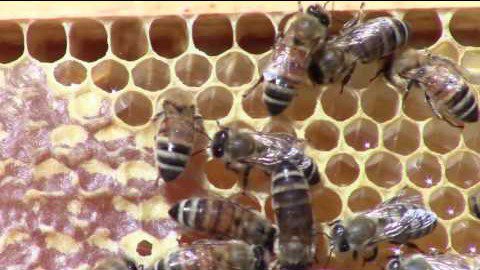How do bees make honey?

How Do Bees Make Honey?
Hello, Barrier family! It’s Kirk from Barrier Pest Control, and today, we’re buzzing into a topic that’s close to my heart: honeybees. While I’ve encountered these insects more times than I can count, I’ve often been struck by the wonder of their work. How do they do it? Let’s journey together to discover the magic of bees and the honey-making process.
Why Bees Make Honey
Honeybees are Nature’s Pantry Planners! Honey is a reliable food source for these critters, ensuring they have enough to eat when there’s a scarcity of nectar, during lousy weather or throughout the long winter months. Plus, it’s a delightful part of their everyday diet.
The Honey-making Journey: From Flower to Hive
The Quest for Nectar: Our worker bee ladies embark on a mission, leaving the hive to locate flowers abundant with nectar. Once they find the perfect bloom, they use their proboscis, a straw-like tongue, to extract the nectar.
Honey Stomach Storage: The nectar is then stored in a special holding tank inside the bee’s body, known as the honey stomach. Here’s where the magic starts! Inside this tank, the nectar is combined with an enzyme called invertase, kicking off the transformation into simpler sugars ideal for long-term safekeeping.
Returning Home: Once the bee’s honey stomach is full, she returns to the hive and takes the incredible task of regurgitating the nectar to her fellow bees. It might sound a tad unappetizing, but trust me, it’s a vital step.
From Nectar to Honey: The nectar’s water content can initially range from 50% to 90%. To turn this into the thick, golden honey we all love, the water content must be reduced to about 18%. Bees facilitate this by placing the nectar in the hive’s cells, allowing evaporation. In some cases, bees even fan their wings, acting as natural air circulators to speed up the process!
Sealing the Deal: Bees have an internal knack for knowing when the nectar’s water content hits the 18% mark. That’s when they get to work sealing the cell with wax produced by glands on their bodies. And just like that, honey is safely stored and ready for consumption.
A Note from Kirk
I’ve been enthralled with bees for years, from my early interactions during hive removal requests to my adventures in beekeeping (thanks to my brother up in Utah). I’ve deepened my appreciation for these winged wonders through trials, errors, and countless research hours.
While Barrier Pest Control ensures your space is free from unwanted pests, it’s essential to recognize bees’ significant role in our environment. If you encounter bees on your property, always call professionals to handle them carefully.
Why Choose Barrier Pest Control
For those moments when you need more than Mother Nature’s brilliance, Barrier Pest Control is here to help. Our promise is steadfast: You’ll love doing business with us, due to the results and our commitment to you. Our key promises include:
– Promptness: We respect your time and show up when we say we will.
– Clean & Tidy Service: Our technicians maintain a professional appearance and always clean up post-treatment.
– Safety First: We pride ourselves on being licensed, insured and prioritizing safe treatments.
Barrier’s Quarterly Pest Control service is backed by a 1-year agreement, ensuring consistent protection against pests. Plus, free retreatments between your four scheduled appointments!
